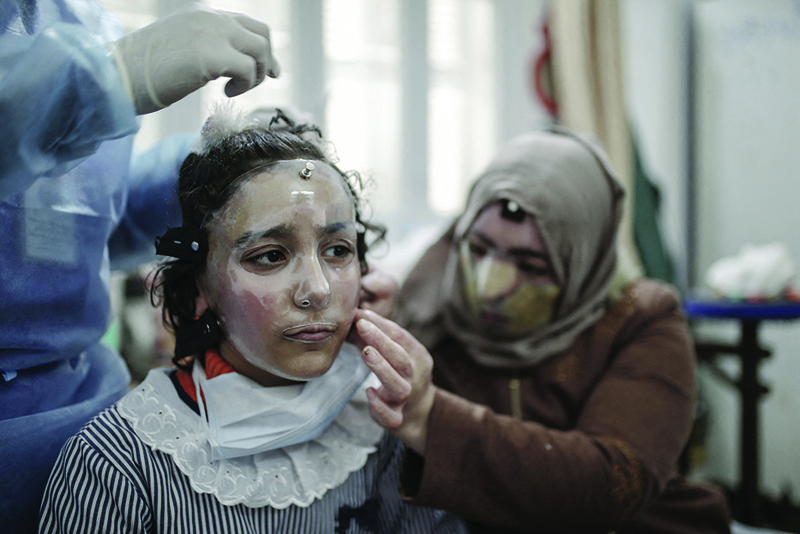 GAZA: Palestinian girl Maram and her mother Izdihar Al-Amawi get fitted with a 3D-printed transparent face mask at a clinic run by Doctors Without Borders in Gaza City on Feb 22, 2021. - AFP
GAZA: Palestinian girl Maram and her mother Izdihar Al-Amawi get fitted with a 3D-printed transparent face mask at a clinic run by Doctors Without Borders in Gaza City on Feb 22, 2021. - AFP
GAZA: The moment Maram Al-Amawi gets back from school, she slips on the 3D-printed mask that covers her face and treats her severe burns from a blaze at a Gaza bakery. But she doesn't go out in the streets for fear of being made fun of. Eight-year-old Maram was severely burned a year ago in the Palestinian refugee camp of Nuseirat, in the central Gaza Strip. The inferno, which local authorities said was caused by a gas leak, left 25 dead and dozens injured, and ravaged several shops.
Today, she and her mother, who was also seriously injured on the face and hands, wear transparent plastic masks developed by medical charity Doctors Without Borders (MSF). The 3D-printed mask puts pressure on the face and advances the healing process, explains Firas Suergo, head of physiotherapy for MSF in Gaza. The patient's face is copied using a 3D scanner, which then allows the printing of a customized plastic mask.
Since the launch of the project in April 2020, which has also been run in Jordan and Haiti, around 20 people have been fitted in Gaza, an enclave of two million Palestinians wedged between Israel, Egypt and the Mediterranean Sea. The fitted mask, with adjustable straps to hold onto the face, has to be worn for between six months and a year, depending on the severity of the lesions.
Even though her mask is transparent and fits perfectly with the contours of her soft face, Maram is afraid of being pointed at in the playground. "The mask has made my burns better, but I'm afraid people will laugh at me if I wear it outside the house," the girl shyly confesses, dressed in the black-and-white striped lace uniform of her school, which is run by the UN agency for Palestinian refugees. "I put it on as soon as I get home from classes."
In fact, she wears it eight hours a day. As for her mother Izdihar Al-Amawi, 31, she keeps her mask on for 16 hours, only removing it during the day to eat. At night, she wears another mask, and she also has special gloves for burns on her hands. "Our wounds have improved thanks to the mask," says Izdihar, who now manages to go about household chores like before the accident. "We were waiting for the taxi after shopping and we suddenly heard a big explosion, then saw fire everywhere," she recalls.
Izdihar and Maram spent two months in hospital undergoing operations. Accepting their disfigured complexions was not easy. "My family refused to look at my face after the accident," says Izdihar. "I only saw my face 50 days after the operation, in the elevator mirror while going to get my mask at the clinic." The mother of four hopes the scars will disappear "in two or three years, as the doctors told us". - AFP

